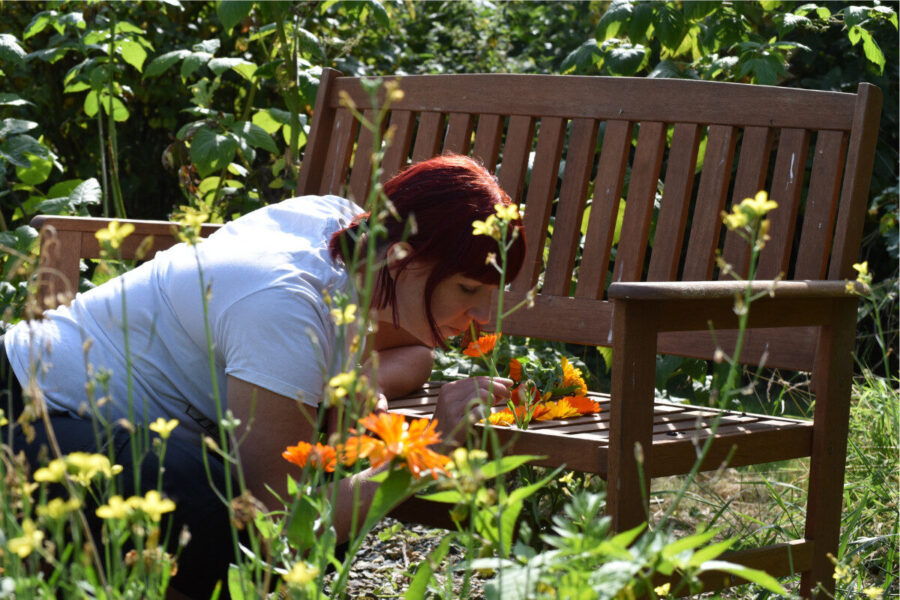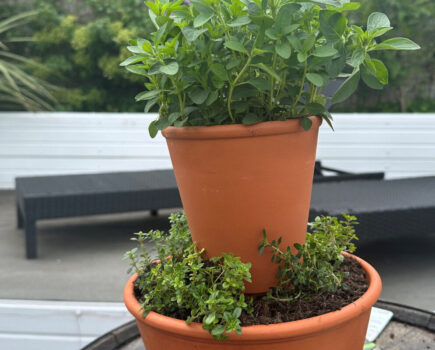Editor and multi-award-winning resilient gardening expert Kim Stoddart explains how to shore up the defences naturally
We really are being tested in so many ways right now. From the doom and gloom of the daily news, to the unpredictability of the weather and gardening year in hand. That said, hasn’t the weather been lovely so far, such a tonic after the sogginess of the year and winter before.
The old phrase ‘make hay while the sun shines’ has never felt more appropriate as the warmth and light bring much-needed joy, so let’s bask in the sunlight a little longer before I reveal some of the challenges this year has also thus far presented. It’s lovely to see how bright everything looks and how even the grumpiest of neighbours can be seen to soften in this early season heat.
Yes, our weather systems are becoming increasingly erratic, so what you need to know is that being prepared for anything is absolutely key. Looking after yourself and others also goes a long way, and making the best of the here and now as best we can. If that means replacing some crispy seedlings with plug plants as Lucy Chamberlain suggests on page 12, then so be it. Let’s ditch the guilt and look at how we can best enjoy and flourish with our gardens in the year ahead.
Working with extra rampant weeds
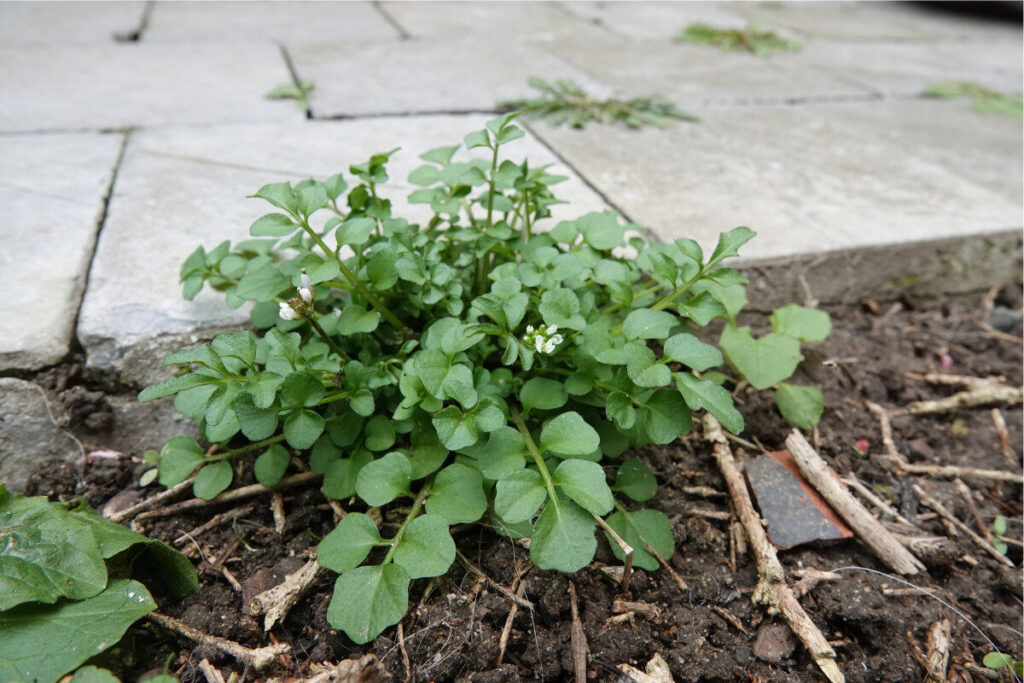

Sun-loving, fast-growing wild plants such as hairy bittercress and dandelions have shot up, flowered and seeded the moment our backs were turned. While No Mow May is increasingly popular for good reason, and longer grass provides many benefits for wildlife, every year is different and this May if I hadn’t removed the hairy bittercress and dandelions with some pathway strimming near the veg patch super quick, I would have been inundated for years to come.

I welcome weeds with gusto elsewhere for their biodiversity, but there has to be a balance and this year a little more cutting back was urgently required.
Tip – If you find that you have too many weeds growing in your beds and borders you can hoe off the tops and then apply a layer of cardboard which, when soaked with water and covered with a layer of compost, will help knock them back. You don’t have to cover a whole bed, you can use impromptu no-dig patches around existing beds as and when needed if you apply a mulch on top to hold it down. Toby Buckland explains how he’s dealing with his rampant gravel weeds on page 62.
Protect the soil from drying out
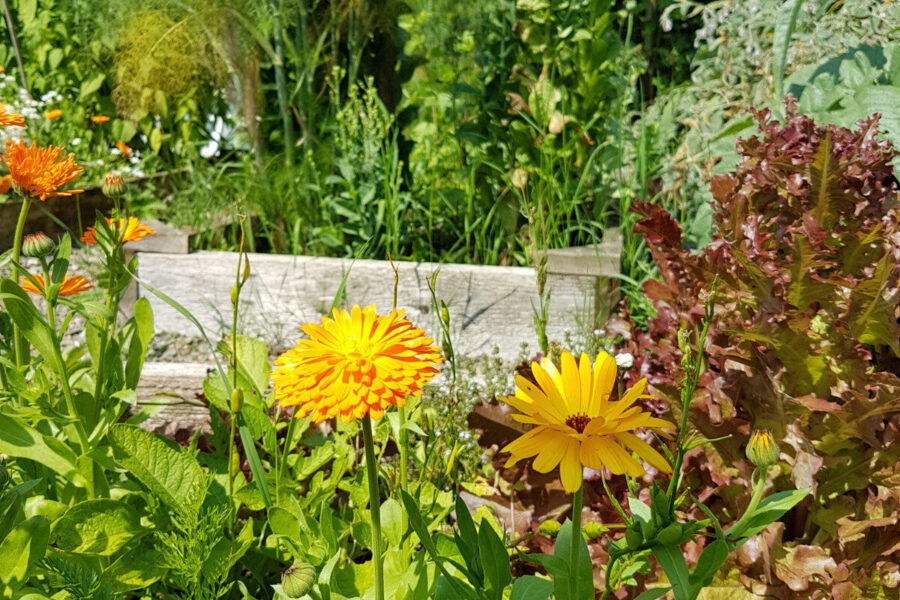
Bare soil is always more vulnerable to the elements, be it an excess of rain or the glare of the sun, so covering it where we can really helps to afford protection. Over winter this can be green manures, a cover or compost and now, as we are busy planting out, the more we can fill gaps the better. This can be through the use of mulches around plantings, which really helps to lock moisture into the ground for longer, thereby reducing the amount of watering you need to do.
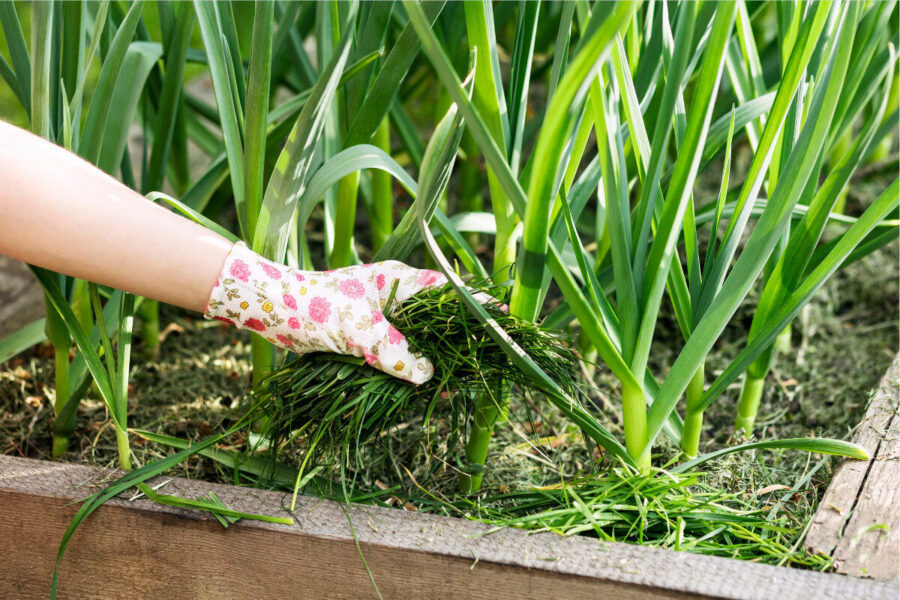
Ruth Hayes offers watering tips on page 8 and the deeper you water the better, as it can then be held in the soil for longer with mulch. Materials which can help in this way include everything from a thin layer of wood chip or grass clippings, leaf mould, chop and drop leaves, cardboard or compost (new or from last year) and mole hill soil.
Tip – Having perennial planting in the soil already really helps afford protection, casting shade and helping to improve the soil structure below.
Consider using screens or shade planting
As the season progresses, too much sun can cause issues for plants so some shade netting can be used as a valuable ally, especially in greenhouses and polytunnels where the temperatures can quickly soar and scorch your seedlings. Mixed planting enables you to use a mixture of tall and ground hugging plants that can protect each other as they grow. Just ensure that sun-loving specimens aren’t too shaded out.
Water butts at the ready
Of course with the super dry spring we now face the risk of flash flooding if we get a period of heavy rain. The ground is dry which means water won’t be so easily able to soak away and this is how surface water can quickly build and flooding occurs. However, just making sure you have some available water collection storage will help to slow the flow. Emptying water butts so they are ready to fill helps, but ultimately even old bins placed outside, or attached to downpipes, all have a valuable role to play.
Don’t cut grass or plants back too much

Now, I know I’ve said I was cutting the dandelions, but I’m still keeping grass longer as it offers more protection against drying out by doing so. Lawns cut very short are super vulnerable to periods of drought, so mowing on a higher cut can help afford valuable protection over the weeks ahead.
Protecting seedlings

We’ve talked about this a lot in the magazine about the importance of finding the brand/s of peat-free compost that work best for you. During heat some composts can more easily cap (develop a solid crust) on the surface so measures such as putting your finger in the soil to check if more watering is needed (or not) will help ensure plants receive the right amount of liquid refreshment.
When planting out, deep watering and the use of a mulch also helps massively, and if you can, it is best to plant out when the weather is a little cooler or earlier or later in the day.
Also consider succession seed sowing as much as you can within recommended time frames to help boost results overall.
…….
Competition time

How are you protecting your garden against drought?
Share your ideas and images for a chance to win one of five copies of Kim’s book The Climate Change Resilient Vegetable Garden and five copies of The Climate Change Garden.
Find more tips, advice and articles like this at the Amateur Gardening website. Subscribe to Amateur Gardening magazine now

